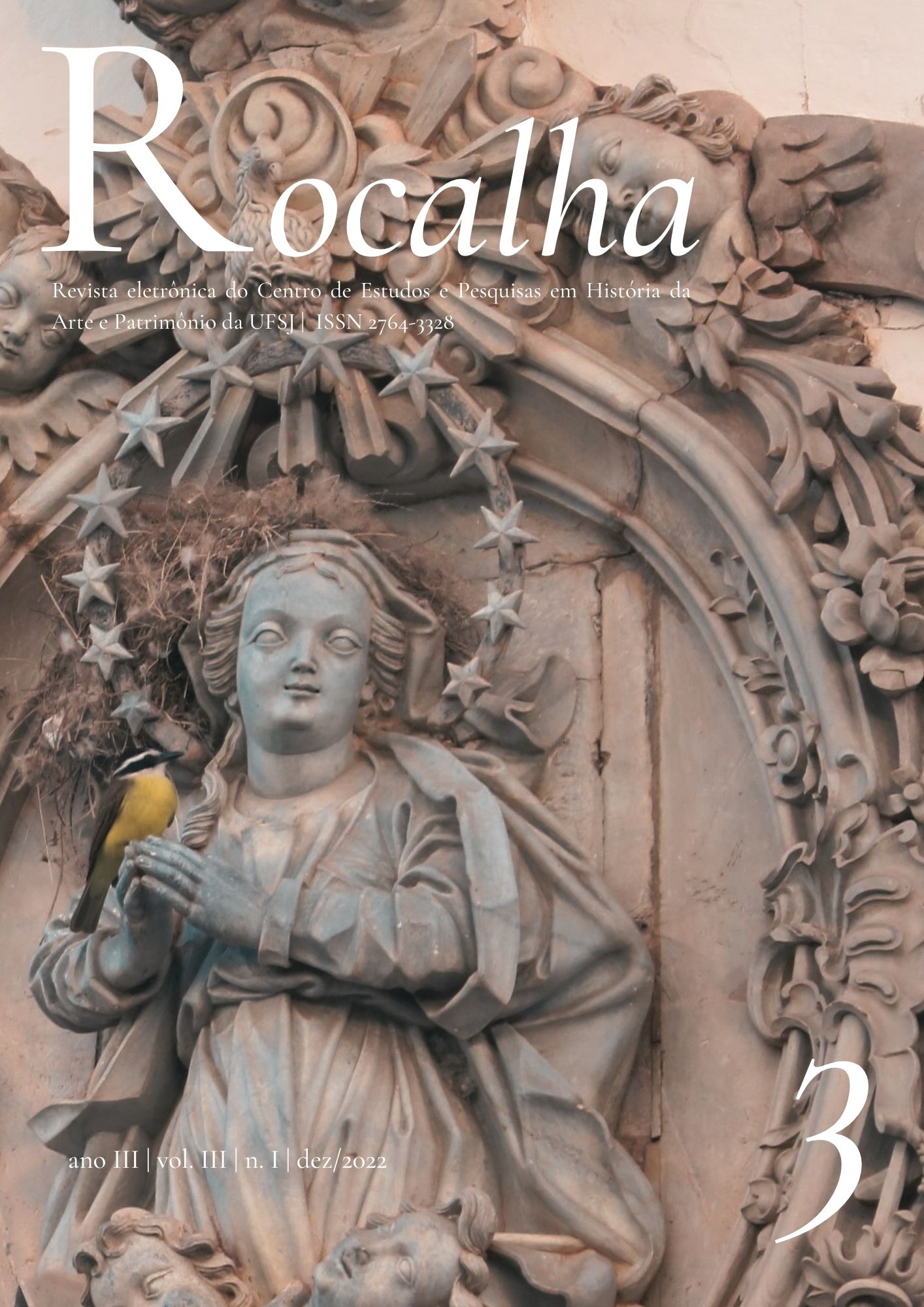O catolicismo carmelita e as devoções pretas no Brasil: apontamentos para o estudo iconográfico das esculturas em madeira policromada dos Santos Elesbão e Ifigênia
Resumo
Resumo: Este artigo aponta representativas imagens em madeira de santos negros carmelitas, presentes no nordeste e sudeste brasileiros. O recorte temporal dos objetos de estudo, compreende os séculos XVI ao XIX, período em que se verificou a cristianização dos gentios, negros e pardos. A atuação das irmandades do Rosário dos Pretos decorreu na edificação de uma série de templos e principalmente na produção de esculturas policromadas com técnica e iconografia diversificadas. A pesquisa utilizou de revisão teórico-prática no exame de acervos das citadas regiões e contemplou análises de aspetos socioculturais, histórico religiosas, técnico materiais e documentação por imagem. Tal síntese evidenciou o predomínio das esculturas do Elesbão, e Ifigênia pelos carmelitas, e proporcionou a análise da variedade técnica, formal estilística e iconográfica acerca dessas esculturas católicas. O estudo facilitou a percepção de especificidades entre as devoções, características relativas aos acervos de cada estado, seus mitos, origens, modelos iconográficos e técnicas construtivas mais recorrentes.
Palavras-chave: Esculturas em madeira policromada. Carmelitas . Devoções negras. Santa Ifigênia. Santo Elesbão
Abstract: This article points out representative wooden images of black Carmelite saints, present in the northeast and southeast of Brazil. The time frame of the objects of study comprises the 16th to the 19th centuries, a period in which the Christianization of gentiles, blacks and browns was verified. The work of the brotherhoods of Rosário dos Pretos took place in the construction of a series of temples and mainly in the production of polychrome sculptures with diversified technique and iconography. The research used a theoretical-practical review to examine the collections of the aforementioned regions and included analyzes of sociocultural aspects, religious history, technical materials and image documentation. Such synthesis evidenced the predominance of the sculptures of the Elesban, and Iphigenia by the Carmelites, and provided the analysis of the technical, formal, stylistic and iconographic variety about these Catholic sculptures. The study facilitated the perception of specificities between the devotions, characteristics related to the collections of each state, their myths, origins, iconographic models and most recurrent construction techniques.
Keywords: Sculptures in polychrome wood. Carmelites. Black devotions. Santa Iphigenia. Saint Elesban




